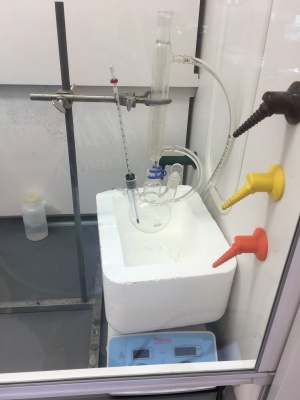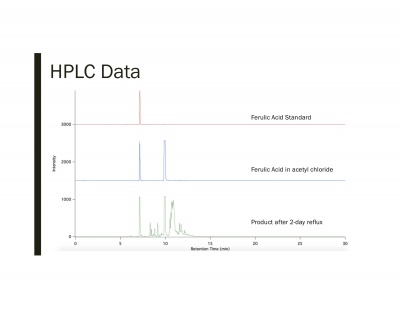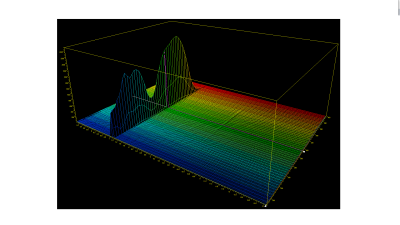Synthesis and Characterization of Lignin Monomers
Prior research on Synthesis of Lignin Monomers done by: Alexandria N. Tibbs
Abstract
Lignin is the second most abundant organic polymer. The structure of lignin is composed of three monomers: p-coumaryl alcohol, coniferyl alcohol, and sinapyl alcohol, which all are found in nature. These natural compounds are not cost friendly for undergraduate research. The carboxylic acid forms of these monomers (p-coumaric acid, ferulic acid, and sinapic acid) can be obtained commercially. This poster will discuss our synthetic approaches to produce the alcohol forms of lignin.
Lignin Monomers
Introduction
Ferulates play important roles in plant growth and undergo radical coupling reactions to produce dimers and cross-linking. Significant quantities are now required by cell wall researchers increasing the the large scale production of these ferulates and other lignins similar to their make up.
Methods/Experimentation
Materials
Ethanol
Acetyl Chloride
Safety
Experimental Procedures
Preparation of 2 mM Ferulic Acid Standards
- 100 mL solution is made with pH 5 buffer using deionized water
- 0.0385 g of Ferulic Acid added to pH 5 buffer
Preparation through 8--5 Coupled Diferulate Procedure ()
- Ethyl Ferulate: 10 g of ferulic acid dissolved in 100 mL ethanol and 5 mL of acetyl chloride. Solution stirred overnight. Volatiles removed by rotary evaporation (rotovap) at 40 C.
- Dimerization: Product of ethyl ferulate dissolved in pH 4.0 acetate buffer. Solution is cooled and added to peroxidase(10 mg in 2 mL of phosphate buffer). Product filtered out to obtain crude product.
- Purification: Use of flash chromatography with EtOAc as eluant. Product recrystallized allowing for NMR data and melting point.
Preparation_________
- Esterification: 0.36 M ferulic acid in ethanol (500 mL) with concentrated HCl. Refluxed for two days. Cooled and ethanol evaporated under pressure (rotovap). Crude extract combined with ethyl acetate (250 mL). Solution dried over anhydrous MgSO4.
Synthesis Mechanism
Results
While minimal research was able to be accomplished, discussion on methods were able to be looked at to finding a more green chemistry approach. The initial method allowed for a two day reflux accumulating in a significant amount of water being used (roughly 700+ gallons). Producing the ferulic acid standard is used in HPLC analysis. Running samples of standards and product from experimental procedures through the HPLC instrument looking at the intensity over a retention time of 30 minutes.
Discusion
Conclusion
Through more compassion between procedures would allow for a more green approach in a laboratory setting. With the possibility of a microwave reactor would allow for lignin synthesis to be rapidly produced.
References
1. [Overview from Lignin and Lignans: Advances in Chemistry]
2. Lignin Biosynthesis and Structure
4. Facile Large-Scale Synthesis of Coniferyl, Sinapyl, and p-Coumaryl Alcohol
5. Simple Preparation of 8--5-coupled Diferulate
- PDF Version: File:Simple Preparation of 8-5 Coupled Diferu.pdf
6. Structure-Activity Relationships
- PDF Version: File:Structure-Activity Relationships.pdf






